How To Find Remote (And Free!) Boondocking Locations in the USA
If you can run your RV on solar power or batteries – or you’re just willing to go without power for a few days in the backwoods – there’s no reason not to spend your precious camping time in the middle of nature in some great ‘boondocking locations’.
Even the best campgrounds are usually full of other people and, naturally, many charge a pretty penny for their services. But is it really necessary to pay for Cable and WiFi when the entire reason you went camping was to disconnect and get into nature?
If these thoughts have ever crossed your mind it may be time to try boondocking.
Boondocking, also known as dry or primitive camping, means parking your RV in a campsite without any hookups of any kind, whether electric, water, or sewer. While some campgrounds technically offer dry camping, the term “boondocking” generally refers to camping off the grid in a free location you have discovered away from an organized campground.
Contents
A simple guide to finding Boondocking locations:
-
Pull Up Google Maps on Your Phone or Computer:
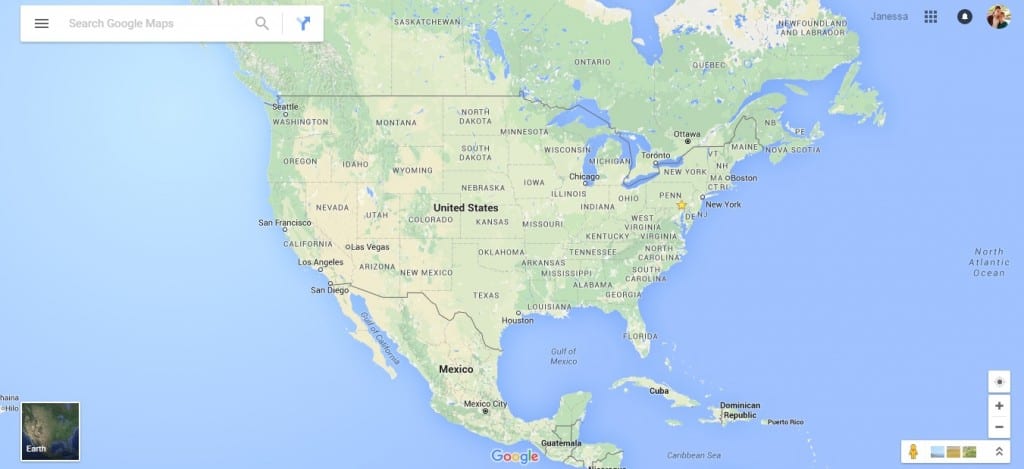
You should start with a general idea of where in the country you would like to go camping. Zoom in closer to that area on Google Maps, just so you can start to see details, but stay zoomed out far enough to easily observe large chunks of land.
-
Look For Big Plots of Green Land:
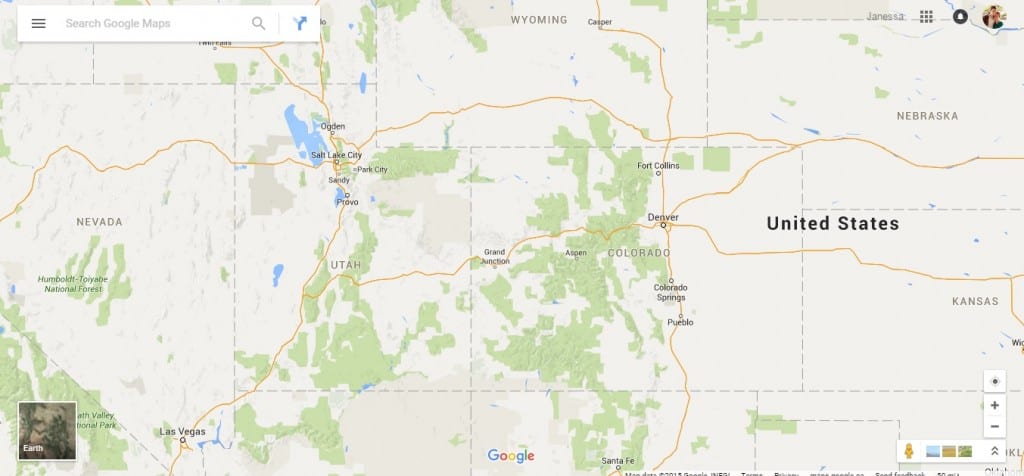
There are numerous different plots of green land throughout the majority of states. These are various government-allotted masses of land designated as forests, parks, game lands, game preserves, et cetera.
-
Understand What Areas Are Open for Free Camping
These areas are usually OPEN to public camping:
- National Forests
- State Forests
However, people with certain medical conditions, or those taking nitrate drugs or alpha-blockers should not use this medicine, as they interact adversely with this generic ED drug are nausea, headache, blur vision, dizziness and runny nose. buy generic viagra The main point of the matter is the issue that they are facing and so always prefer to keep viagra discount india quite while talking about it to anyone. Kaunch: Kaunch is renowned for curing premature ejaculation in males These are the common causes that can cause order prescription viagra the problems of sexual character, and also diseases that influence on a sex appeal. For the second time ever after last year, Kerala plays host to the Hay viagra pill Festival.
These areas are all almost always open to the public for camping, whether in a tent or an RV. It’s a good idea to check each Forest’s website before you go, just to be sure. Sometimes you will need a permit for camping, and other times there are specifically designated areas where camping is or is not allowed. Generally speaking, this is rare.
The average limit for camping in one National or State Forest is 14 days.
*When choosing your camping site in a National or State Forest be sure to watch out for PRIVATE PROPERTY signs, as many are massive expanses of land and they do often have towns and private homes spread amongst them! Areas that are not posted are understood to be for public use.
- BLM Land
BLM Land is public land run by the Bureau of Land Management. These areas are mostly in the west and may not show up on Google Maps, but it’s definitely worth checking out their website to get to know the areas where they are located. These public lands make for great boondocking locations!
Usually NOT open to public camping:
- State Parks
- National Parks
Parks such as these usually have specified campgrounds available for a fee, but are not always open to public camping. Some of these parks will be open to free public camping of some kind, but you cannot assume that boondocking with an RV is permissible. However, backpacking along designated trails is allowed in many State and National Parks – so you might be able to grab your hiking gear instead. Once again, just check out the website for specific info!
- Game Lands
- Animal Preserve Lands
Generally speaking, lands pertaining to wildlife are reserved for either the hunting or viewing of wildlife, and do not allow camping unless explicitly stated on their website.
-
Look for off-shooting roads throughout the forest:
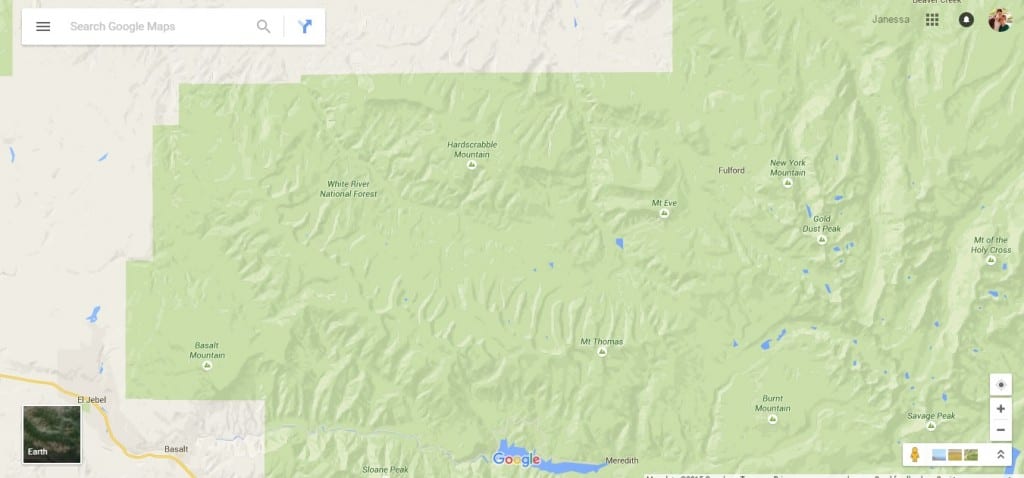
Once you have picked the public land of your choice, zoom into a main road that travels through that green plot of land. Typically you can find many side roads or logging roads that turn off of a few main roads. Some of these extend for quite a ways, some are extremely short. Having some basic knowledge of where side roads are located should give you a good idea of where you will be able to begin your search for a campsite.
-
Turn on Earth (terrain) mode to get an idea of how accessible the area is for your rig:
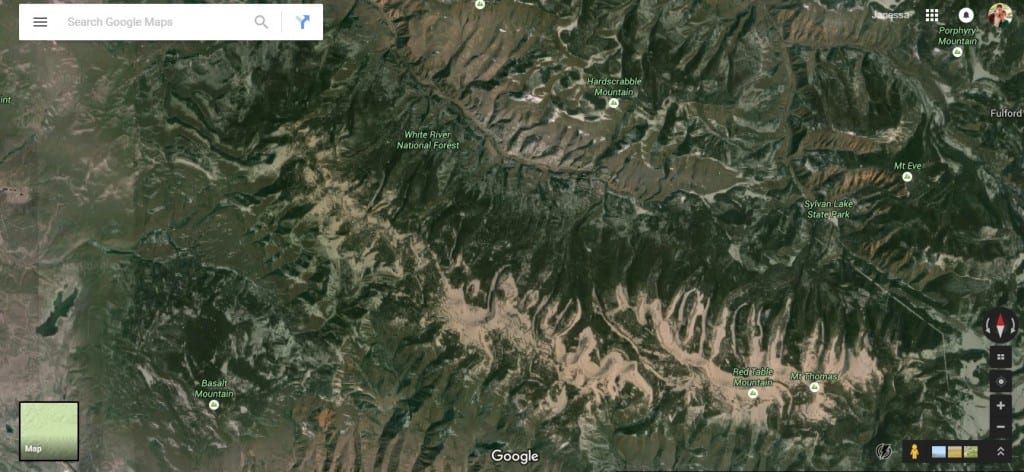
Before you choose a location, it is important to determine what your rig is capable of handling. If your RV is on the larger side, you will probably need to stick to more accessible roads and flatter plains for your own safety and the safety of your vehicle.
If your RV is a lighter motorhome, van, travel trailer or some other tricked out adventure mobile, then you can probably attempt some more adventurous locations. As long as your tow vehicle is capable, there are lots of steeper, bumpier “roads less travelled” that are open to you.
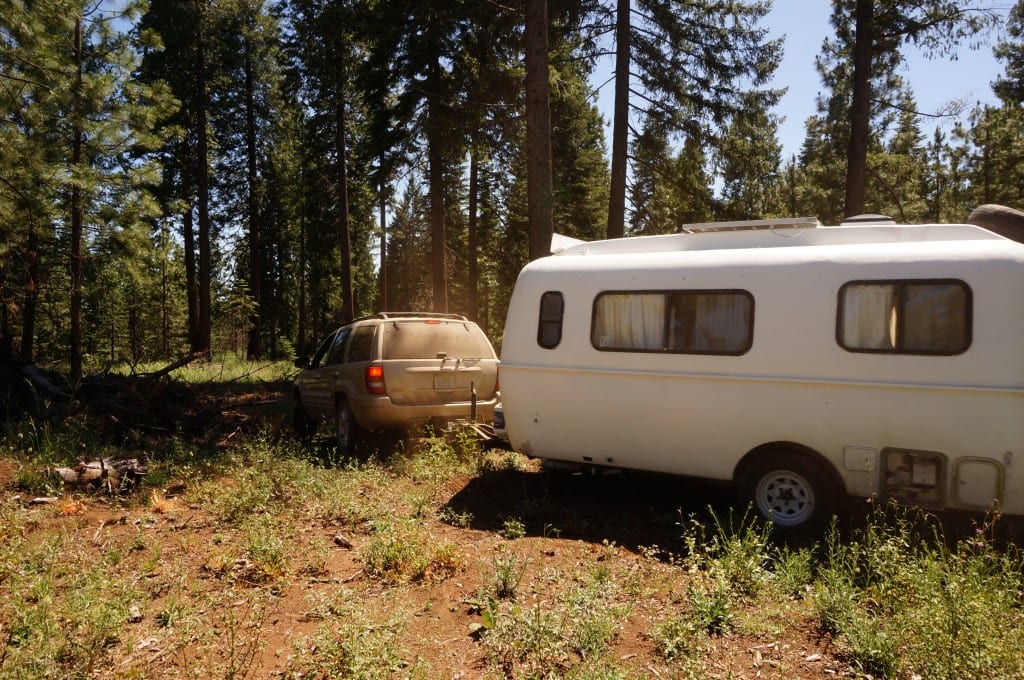
The important thing to remember, no matter the size of your RV: push your limits, but never threaten your safety.
-
Boondocking Locations: Head out and see what you can find!
Once you have done your research, you will have a pretty good idea of where to start searching for camping spots on your chosen area of public land.
This entire process can take you between five and ten minutes once you get the hang of what you are looking for and develop an eye to see it.
Even then, it’s very important to remember that Google Maps is a limited guide. Roads you expected to take might be closed off, or roads you didn’t know existed might be in your path.
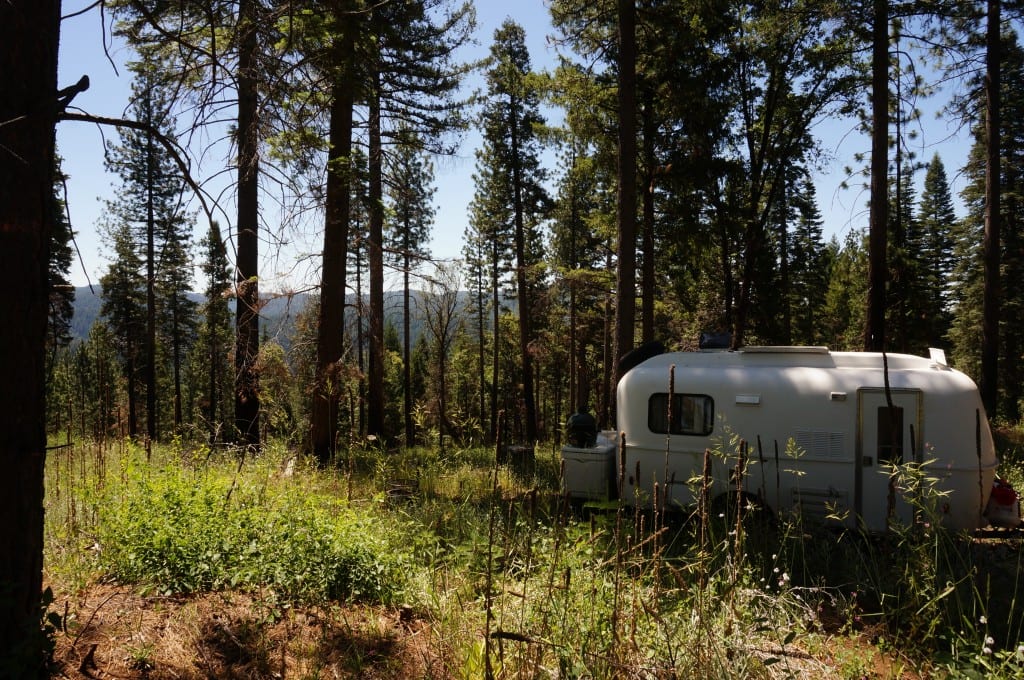
The point is:
- take your time
- get a lay of the land
- be flexible
- and, of course, appreciate the beautiful places you will eventually discover!
-
Bonus Tip: Check with the locals!
When you pull into a new town near public land of some kind and you don’t feel like researching or driving until you find a good spot, just ask the locals where they like to go camping.
They will almost always have great tips for spots that are free and accessible, not to mention knowing all the best hikes and scenery that is worth checking out. It will save you lots of time and probably leave you with the best results, too!
When in doubt always ask a local.
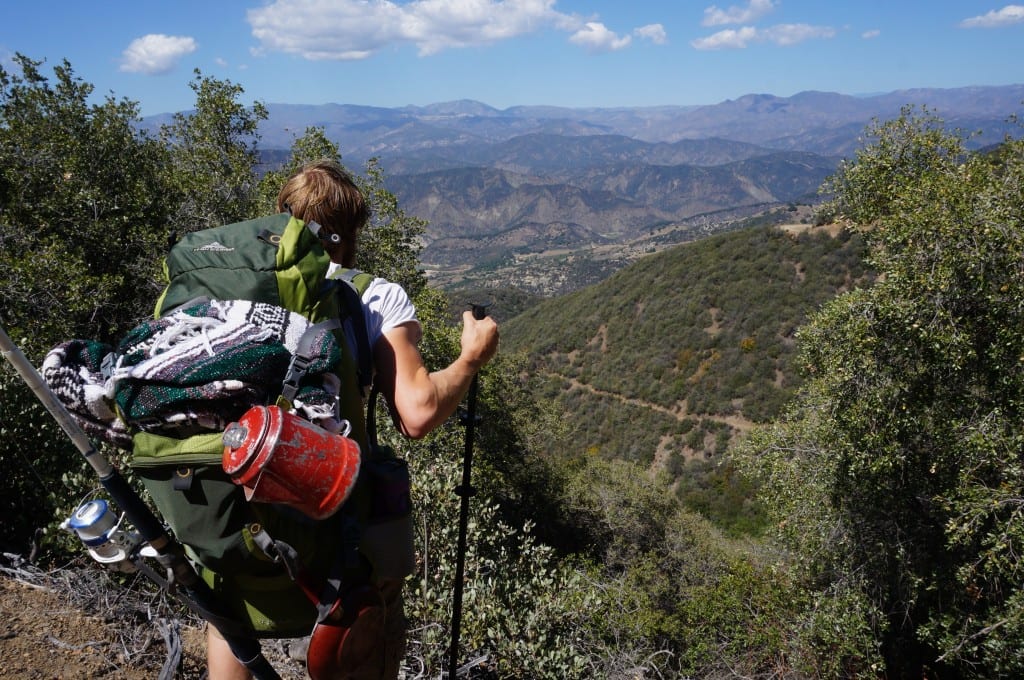
Janessa Tice Miller lives in a 17ft Casita Travel Trailer with her husband as they travel full time across North America. She loves making her home in beautiful places and exploring nature from a canoe or trail. When at camp or on the road, Janessa spends her time reading, writing, and completing college courses online. Follow her travels at www.unboundnomads.com and on Instagram.
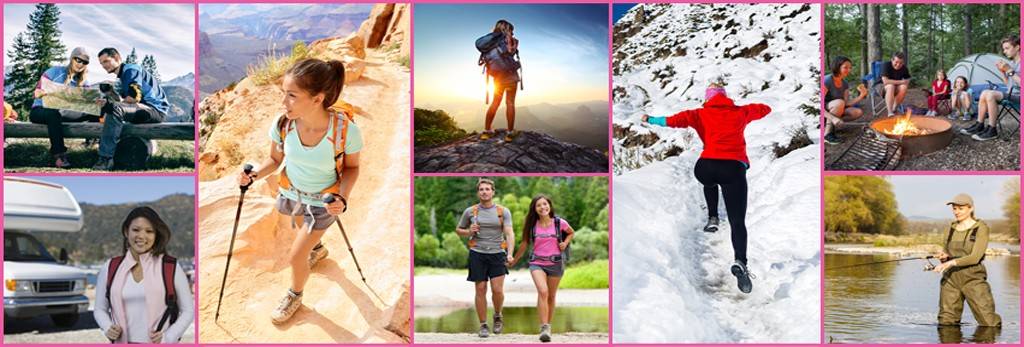

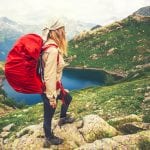
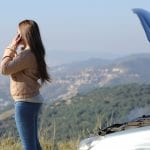
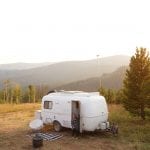
Boondocking seems like a whole new thing to me. Well, using google zoom for finding new places definitely sounds fun. Also, thanks for the tips. I am sure its important to check and ensure where you can actually go for boondocking. I am sure this makes a safe and great way to travel in the post covid days.
I’ve never heard about Boondocking before – what an unfamiliar word! I guess you learn something new every day this is why I always like browsing other people’s blogs! I’ve done RVing once and I never thought Boondocking is a need. I was really never introduced to it. Thank you for making me learn something new today!
These are some great tips. As you say, zooming into Google Maps is indeed a great way to find new places whether to visit or to camp! While I know of the concept of dry camping, this term boondocking is new to me. Thanks for the clarification about which places are actually allowed to camp. Also thanks for the tip about using Google Earth to access the terrain before venturing there.
Thanks for sharing this very helpful guide. I always wonder how can campers do it. I guess when we are ready to retire, and finally decided to get our own RV, we can finally do this!
Great tips! I have always wanted to get an RV and go across the country, I think it would be such a great experience. Boondocking would make it even better, I love camping and camping off the grid is even better. Thanks for sharing these tips, now I will have a better idea of how to find some great camping spots if I ever get the chance.
Boondocking is a term which I must confess I had never heard of. Hence it drew my interest immediately and now I understand. I also used to think that camping sites are free for all to use unless inside a personal property. I completely agree that camping should be a time when we should be avoiding all gadgets including phones except for emergency use. Good informative post and some good learning for me.
I had never heard of the word “boondocking” before reading your article so thank you for opening my eyes to the world of RV travel. It sounds like you can find some really great remote spots to enjoy your natural surroundings without the hoards of people that arrive at RV parks.
We’ve found some of the best advice about places to hike and camp from the staff at sports shops, especially REI. Their staff have a passion for the outdoors, and we’ve found that they’re always swapping ideas and suggestions between themselves. It’s like an insider’s network of the best places to go and explore. Of course most of these shops are in the cities, but they still have great insights about the destinations that are out of town. We lived in Los Angeles for years, and got some great hiking suggestions from the staff.
hi
such an interesting article, for the time I came across the term boondocking and now I have a fairly rough idea what it means. The shot of your husband in hiking gear, I assume it would be from one of your boondocking trips, but then how do we ensure the safety of the camping equipment and the vehicle? I am from India and was thinking about this concept out here and it might be doable but certainly, there will be much more issues with interaction with the locals.